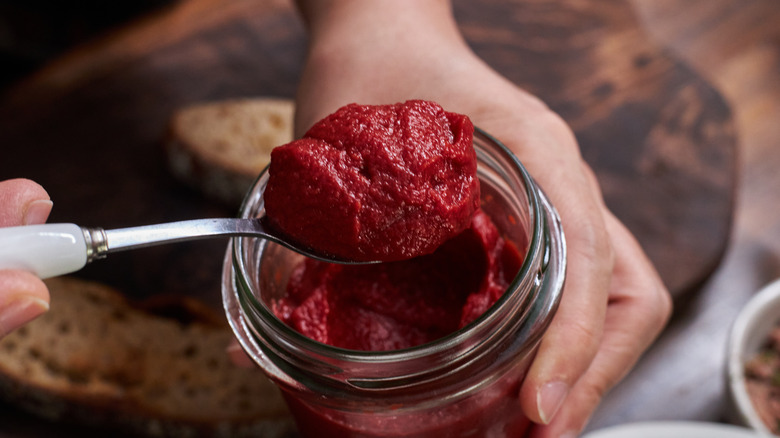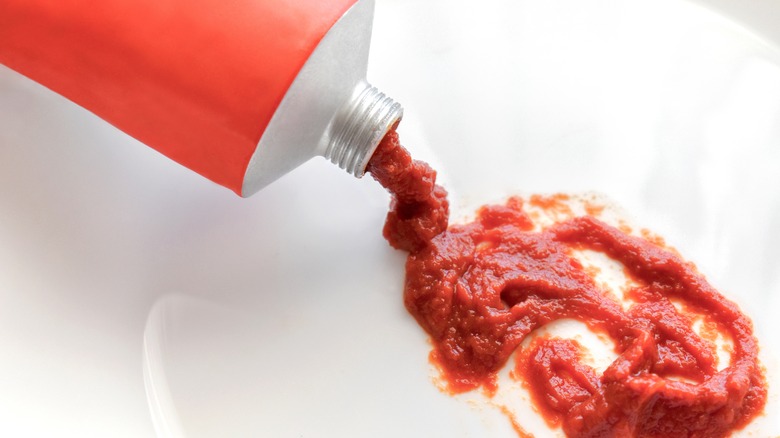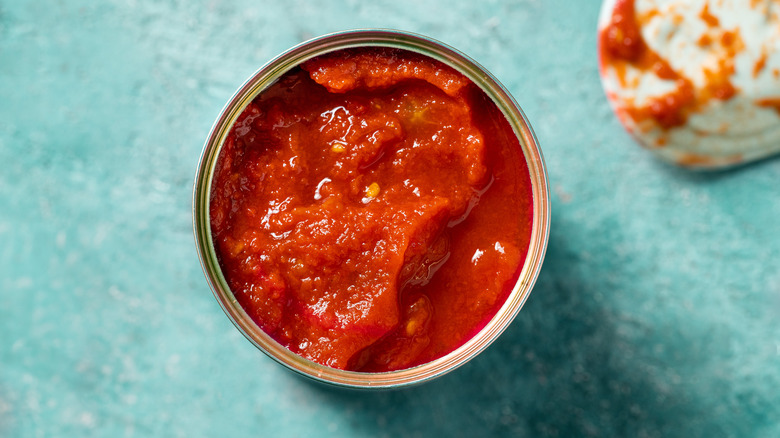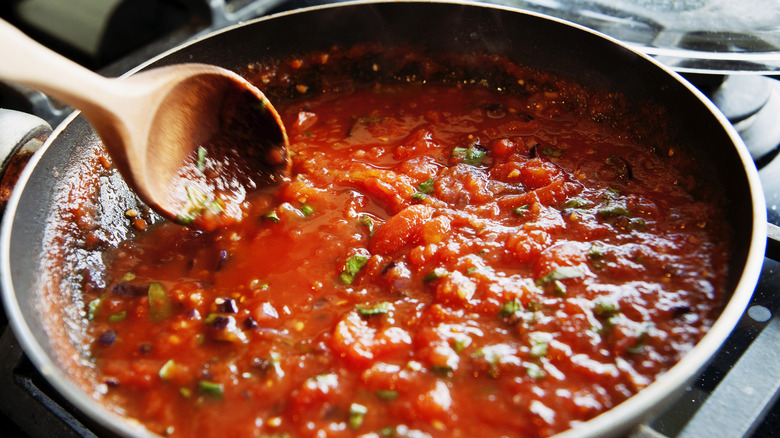What Makes Tomato Purée And Paste Different?
Tomato, to-mah-to — can there really be much of a difference between tomato purée and paste? Actually, yes. Although they both come from the same fruit (yes, a tomato is technically a fruit!), they vary quite a bit in how they're made, their flavor profiles, and their uses. While some recipes might let you swap one for the other in a pinch, each brings something unique to the table, so it's helpful to understand what makes them distinct.
Knowing the difference between tomato purée and paste helps you get the best results in your cooking. Each one has a different intensity, texture, and recommended cooking applications, so choosing the right one can add just the right depth of flavor and consistency to your dishes.
What is tomato paste?
You can buy tomato paste in a tube or a can — and there's a bit of a difference between those two varieties that affects flavor and storage. No matter how you choose to buy it, though, tomato paste is called for in small amounts in recipes, because it's concentrated, packing a punch with just a little bit added. Made by cooking down and straining tomatoes until they thicken into a paste, this not-so-secret weapon delivers intense flavor that boosts a variety of dishes, lending them better depth and richness. While you might find versions with added seasonings, it's generally best to stick with the regular type for versatility.
When cooking with tomato paste, it's most effective to add it at the beginning of your recipe, allowing it to caramelize and meld with the other ingredients for more complex flavor. Beyond just being a flavor enhancer, it can also be used to thicken tomato-based sauces. After opening, be sure to store it in the refrigerator; you can also portion it out and freeze it for later use.
What is tomato purée?
Tomato purée is quite different from tomato paste in both taste and texture, and it's also slightly different from tomato sauce. Purée is made from fresh tomatoes that are quickly heated, strained, and often blended to a smooth consistency. This process preserves the tomatoes' vibrant color and fresh flavor, making purée perfect for recipes that benefit from a bright, straightforward tomato taste.
Unlike tomato sauce, which is thinner and usually seasoned with herbs and spices, tomato purée is typically unseasoned, giving you a blank canvas to build on. In fact, it serves as the base for many tomato sauces — it's fresh, simple, and easy to upgrade with just a few ingredients to suit your dish.
Choosing between tomato paste and purée
While both tomato paste and tomato purée bring rich tomato flavor to a recipe, they differ in consistency, taste, and usage. Tomato paste is thick, intensely concentrated, and used in small amounts to boost flavor, color, or thicken sauces. On the other hand, tomato purée has a thinner, smooth texture, delivering a fresh tomato flavor that's perfect as a base for sauces, soups, and condiments.
When it comes to substituting one for the other, purée can't replicate paste's depth and thickness, but paste can sometimes stand in for purée if it's thinned with water or broth, just as it can be a used as substitute for tomato sauce. However, keep in mind that the flavor won't be as fresh and it will have a more intense taste, so use it sparingly and adjust seasoning as needed.



